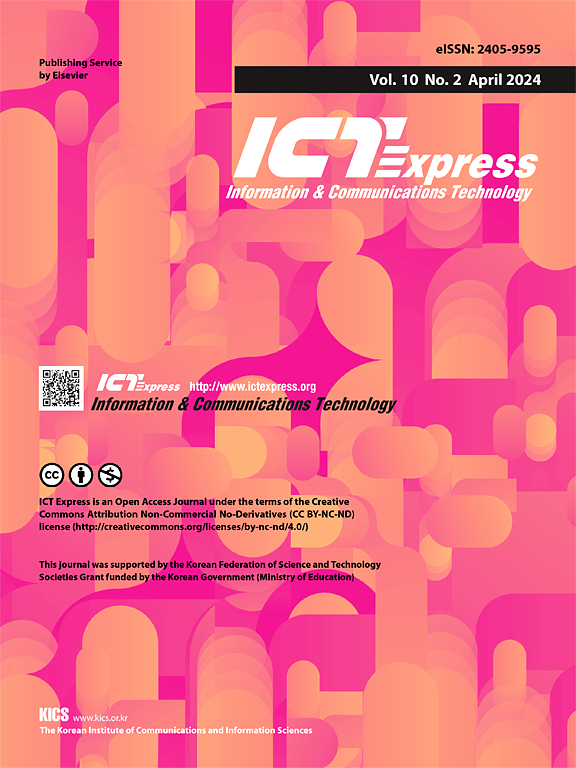An Efficient Resource Allocation Mechanism with Fuzzy C-Means and Adaptive RNNs for D2D Communications in Cellular Networks
IF 4.2
3区 计算机科学
Q1 COMPUTER SCIENCE, INFORMATION SYSTEMS
引用次数: 0
Abstract
Direct communication links between nearby users can be established via device-to-device (D2D) communications, eliminating the need for a base station (BS) or remaining core networks. The D2D users’ transmission power is lower than the BS’s traffic burden. Nonorthogonal multiple access (NOMA) expertise allows a transmitter to direct multiple impulses at the same wavelength by power superposition, possibly enhancing spectrum efficiency. In this work, an adaptive recurrent neural network (ARNN) is developed to effectively handle the nonlinearity of transmission powers and channel diversity. Furthermore, a method called fuzzy C-means clustering (FCMC) is designed to group users on different subcarriers with different strengths. For spectrum utilization to improve, clustering is necessary. The advanced coati optimization algorithm (ACOA) is subsequently utilized to assign assets. The Levy Flight (LF) function is taken into consideration when choosing the weight value in the Coati Optimization Algorithm (COA). The simulation findings demonstrate that our method is better at increasing system throughput while meeting users’ file requests. This method enables the efficient use of resources and power control in interactions between devices. The proposed method is implemented in MATLAB, and its performance is evaluated via performance measures. It is compared with conventional approaches. The results indicate that the suggested method achieves superior outage probability values across different user counts, with values of 0.99465 for 40 users, 0.99946 for 60 users, 0.99946 for 80 users, and 0.999446 for 100 users. Comparatively, the Recurrent Neural Network-Honey Badger Algorithm (RNN-HBA) achieved slightly lower outage probabilities, whereas the Deep Belief Network (DBN) and Particle Swarm Optimization (PSO) demonstrated more significant variations, especially with a greater number of users.
基于模糊c均值和自适应rnn的蜂窝网络D2D通信有效资源分配机制
附近用户之间可以通过设备对设备(D2D)通信建立直接通信链路,从而消除了对基站(BS)或剩余核心网络的需求。D2D用户的传输功率低于BS的业务负担。非正交多址(NOMA)技术允许发射机通过功率叠加引导相同波长的多个脉冲,可能提高频谱效率。为了有效地处理传输功率和信道分集的非线性,本文提出了一种自适应递归神经网络(ARNN)。在此基础上,设计了一种模糊c均值聚类(FCMC)方法,对不同子载波上不同强度的用户进行分组。为了提高频谱利用率,聚类是必要的。随后利用先进的coati优化算法(ACOA)进行资产分配。Coati优化算法(COA)在选择权重值时考虑了Levy Flight (LF)函数。仿真结果表明,该方法在满足用户文件请求的同时,能更好地提高系统吞吐量。这种方法可以在设备之间的交互中实现资源的有效利用和功率控制。在MATLAB中实现了该方法,并通过性能指标对其性能进行了评价。并与传统方法进行了比较。结果表明,所建议的方法在不同用户数量下获得了更好的停机概率值,40个用户的停机概率值为0.99465,60个用户的停机概率值为0.99946,80个用户的停机概率值为0.99946,100个用户的停机概率值为0.999446。相比之下,递归神经网络-蜜獾算法(RNN-HBA)的中断概率略低,而深度信念网络(DBN)和粒子群优化(PSO)表现出更显著的变化,特别是在用户数量较大的情况下。
本文章由计算机程序翻译,如有差异,请以英文原文为准。
求助全文
约1分钟内获得全文
求助全文
来源期刊

ICT Express
Multiple-
CiteScore
10.20
自引率
1.90%
发文量
167
审稿时长
35 weeks
期刊介绍:
The ICT Express journal published by the Korean Institute of Communications and Information Sciences (KICS) is an international, peer-reviewed research publication covering all aspects of information and communication technology. The journal aims to publish research that helps advance the theoretical and practical understanding of ICT convergence, platform technologies, communication networks, and device technologies. The technology advancement in information and communication technology (ICT) sector enables portable devices to be always connected while supporting high data rate, resulting in the recent popularity of smartphones that have a considerable impact in economic and social development.
 求助内容:
求助内容: 应助结果提醒方式:
应助结果提醒方式:


